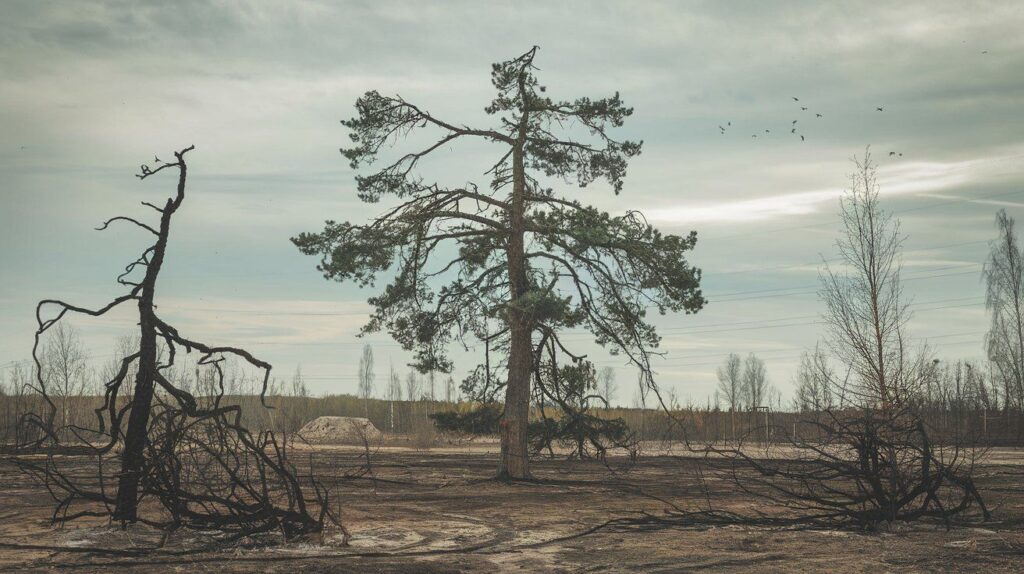
Nature is tough, but few stories showcase its resilience like the tale of a lone pine tree that survived a nuclear explosion. On July 16, 1945, the United States conducted the first-ever nuclear test at the Trinity site in New Mexico. The blast, equivalent to 20,000 tons of TNT, obliterated everything in its path—except for one stubborn tree that stood just 1,200 feet from ground zero.
This Japanese black pine, part of a small grove used to test the bomb’s effects on living organisms, endured a fireball hotter than the sun’s surface and a shockwave that leveled steel towers. The explosion vaporized sand into glass and left a crater 10 feet deep, but the tree, scorched and stripped of most of its needles, clung to life. Scientists were stunned. While other trees in the grove were uprooted or incinerated, this pine’s deep roots and sturdy trunk helped it withstand the unimaginable force.
The tree’s survival became a symbol of resilience. After the test, it was left in the desert, its charred bark a testament to the bomb’s power. Decades later, in 1973, a cutting from the tree was taken and planted at the U.S. National Arboretum in Washington, D.C., as part of a peace gesture with Japan. Today, that offspring, known as the “Hibakujumoku” (survivor tree), thrives as a living reminder of both destruction and hope.
This pine’s story isn’t just about surviving a blast—it’s a glimpse into nature’s ability to endure even humanity’s most devastating creations. The Trinity test marked the dawn of the nuclear age, but the tree’s quiet defiance shows that life can persist in the face of chaos. If you ever visit the Arboretum, look for this unassuming pine. It’s a survivor with a story that outshines even the brightest explosion.

Leave a Reply